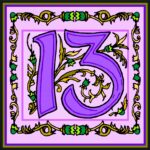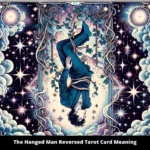The Tarot deck is an intricate tapestry of symbols, each card imbued with its own unique significance and narrative. Among these, the Death card, often perceived with trepidation, stands out as both a harbinger of doom and a potent symbol of transformation. This duality captures the imagination of Tarot enthusiasts and casual observers alike, prompting reflections on the nature of change, mortality, and the cyclical essence of life itself.
Interestingly, the allure of the Death card is often magnified by societal taboos surrounding mortality. This card, associated with the zodiac sign Scorpio, conjures visceral reactions. Many instinctively recoil, conflating the imagery of death with a foreboding omen. Yet, a deeper understanding reveals that this perception obscures the card’s true essence: a profound invitation to embrace change and evolution.
At its core, the Death card signifies the end of a particular phase in life, a necessary clearing to make way for new beginnings. When drawn in a reading, it often heralds the conclusion of relationships, career paths, or even outdated belief systems. Rather than an abrupt end, this transition is more akin to a chrysalis relinquishing its form to welcome a butterfly. It embodies the universal truth that endings are inextricably linked to new beginnings.
The peculiar fascination with the Death card also stems from our collective curiosity about the unknown. Humanity has long grappled with the concept of mortality—its inevitability provokes existential reflection. In many cultures, death is not merely an end but a passage to another realm, an enriching transformation that reinforces the cycle of life. The Death card resonates particularly in this context, prompting individuals to confront their fears and consider what lies beyond the veil of existence.
Moreover, the imagery often associated with the Death card—typically depicting the grim reaper or a skeletal figure—serves as a theatrical reminder of mortality. While macabre, this symbolism invites contemplation rather than dread. It calls to mind the fragility of life and the importance of living with intention. As such, the Death card can be interpreted as a motivator to seize opportunities, pursue passions, and cultivate meaningful connections before the sands of time slip away.
In practical application during Tarot readings, the appearance of the Death card can evoke a myriad of interpretations, depending critically on the cards surrounding it and the context of the question posed. If drawn alongside the Ten of Cups, for instance, it may suggest the ending of a tumultuous phase in one’s personal relationships, clearing the way for harmony and joy. Conversely, if paired with cards emphasizing conflict, such as the Five of Wands, it may indicate a more tumultuous transformation requiring careful navigation through discord.
Emphasizing again the notion of rebirth, transitioning from one state to another is an essential theme echoed within the Death card’s rich narrative. This idea resonates through various cultures’ mythologies and spiritual teachings, which provide insights into the human experience. Many spiritual philosophies underscore that every ending births a new opportunity, urging individuals to embrace change as an integral part of existence. Whether one is contemplating a breakup, career shift, or personal evolution, the card serves as a reminder of the impermanence of circumstances, inviting a reevaluation of one’s current situation.
Moreover, psychological interpretations of the Death card can be enlightening. From a Jungian perspective, this card can be seen as a symbol of the ‘death’ of an outdated self, paving the way for the emergence of a more authentic identity. This transformative experience may encompass emotional healing, releasing past traumas, and allowing oneself to step into the light of personal growth. It encourages individuals to confront inner demons, fostering self-awareness and acceptance.
The Death card can also serve as a reflection of society’s own struggles with progress and entropy. In times of collective societal upheaval, the card may capture the zeitgeist, embodying the tumultuous transitions that precede significant change. Whether through political shifts, cultural revolutions, or technological advancements, the Death card resonates with humanity’s continuous dance between creation and destruction, affirming the cyclical nature of existence.
Furthermore, the card’s visual artistry often evokes profound introspection. Illustrators and artists across generations have depicted the Death card through rich symbolism and allegory, each interpretation adding layers to its meaning. This visual representation can inspire multifaceted discussions, prompting viewers to consider their interpretations and emotional responses to the imagery. As such, it becomes not only a card in a deck but a portal to deeper philosophical and existential inquiries.
In conclusion, the Death card remains a source of intrigue and exploration, embodying the interplay between endings and new beginnings. Its symbolism encapsulates the complexities of human existence—reminding us that while we may fear change, it is often the catalyst for growth and renewal. In part, the fascination with this card arises from the universal truths it unveils about life, mortality, and the inexorable march of time. By choosing to embrace the message of the Death card, one begins to understand that true transformation lies in accepting the inevitability of change and the blessings that emerge from navigating one’s own transitions with grace.








Leave a Comment